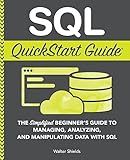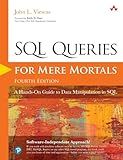Best SQL Books to Buy in December 2025

SQL QuickStart Guide: The Simplified Beginner's Guide to Managing, Analyzing, and Manipulating Data With SQL (Coding & Programming - QuickStart Guides)



Practical SQL, 2nd Edition: A Beginner's Guide to Storytelling with Data



SQL Programming QuickStudy Laminated Reference Guide



SQL Queries for Mere Mortals: A Hands-On Guide to Data Manipulation in SQL



SQL for Data Analysis: Advanced Techniques for Transforming Data into Insights



SQL in 10 Minutes a Day, Sams Teach Yourself



SQL Cookbook: Query Solutions and Techniques for All SQL Users


To join tables with a condition in PostgreSQL, you can use the syntax of the JOIN keyword followed by the ON keyword and the condition. The condition typically involves comparing a column from one table to a column from another table to establish the relationship between the two tables.
For example, you can join two tables, such as "employees" and "departments," based on the common column "department_id" by using the following query:
SELECT employees.employee_id, employees.employee_name, departments.department_name FROM employees JOIN departments ON employees.department_id = departments.department_id;
This query will return the "employee_id," "employee_name," and "department_name" of all employees along with their corresponding department names by joining the "employees" table with the "departments" table based on the condition that the "department_id" in the "employees" table matches the "department_id" in the "departments" table.
By using the JOIN and ON keywords, you can specify the conditions for joining tables to retrieve the desired data from multiple tables in PostgreSQL.
What is a right outer join in PostgreSQL?
A right outer join in PostgreSQL is a type of join operation that returns all rows from the right table of the join and the matched rows from the left table. If there is no match, the result is filled with NULL values for columns from the left table. This means that all rows from the right table are included in the result set, regardless of whether they have a matching row in the left table.
What is a full outer join in PostgreSQL?
A full outer join in PostgreSQL is a type of join operation that returns all rows from both tables involved in the join, including the rows that do not have a matching row in the other table. This means that if there is no matching row in the other table, NULL values will be returned for the columns from that table.
How to perform a self join in PostgreSQL?
To perform a self join in PostgreSQL, you would need to write a query that selects data from the same table but with different aliases. Here is an example query:
SELECT e1.employee_id, e1.employee_name, e1.manager_id, e2.employee_name AS manager_name FROM employees e1 JOIN employees e2 ON e1.manager_id = e2.employee_id;
In this query, the table employees is being self-joined based on the manager_id column to retrieve the employee's name and their manager's name. The aliases e1 and e2 are used to reference the same table with different names.
How to join tables using the USING clause in PostgreSQL?
To join tables using the USING clause in PostgreSQL, follow these steps:
- Start by writing a SELECT statement to specify the columns you want to select from the tables you are joining.
- Use the JOIN keyword to specify the tables you want to join and the type of join (e.g., INNER JOIN, LEFT JOIN, etc.).
- Use the USING clause to specify the column(s) that you want to use for the join condition. The column specified in the USING clause must have the same name in both tables.
Here is an example that demonstrates how to join two tables using the USING clause:
SELECT orders.order_id, customers.customer_name FROM orders INNER JOIN customers USING (customer_id);
In this example, the orders table and customers table are joined on the customer_id column using the USING clause. The SELECT statement retrieves the order_id column from the orders table and the customer_name column from the customers table.
Remember that the columns specified in the USING clause must have the same name in both tables in order to use the USING clause for joining tables in PostgreSQL.
How to join tables with condition in PostgreSQL using INNER JOIN?
To join tables with conditions in PostgreSQL using INNER JOIN, you can use the following syntax:
SELECT columns FROM table1 INNER JOIN table2 ON table1.column_name = table2.column_name WHERE condition;
For example, let's say you have two tables "employees" and "departments" and you want to join them based on the "department_id" column:
SELECT employees.employee_id, employees.employee_name, departments.department_name FROM employees INNER JOIN departments ON employees.department_id = departments.department_id WHERE employees.salary > 50000;
In this query, we are selecting the employee_id and employee_name from the "employees" table, as well as the department_name from the "departments" table. We are joining the two tables on the "department_id" column and applying a condition that only employees with a salary greater than 50000 will be returned.
What is the purpose of joining tables in PostgreSQL?
The purpose of joining tables in PostgreSQL is to combine rows from two or more tables based on a related column between them. This allows for the retrieval of data from multiple tables in a single query, making it easier to analyze and extract information that may be spread across different tables. Joining tables in PostgreSQL is necessary in order to link related data together and perform more complex queries that involve data from different sources.
